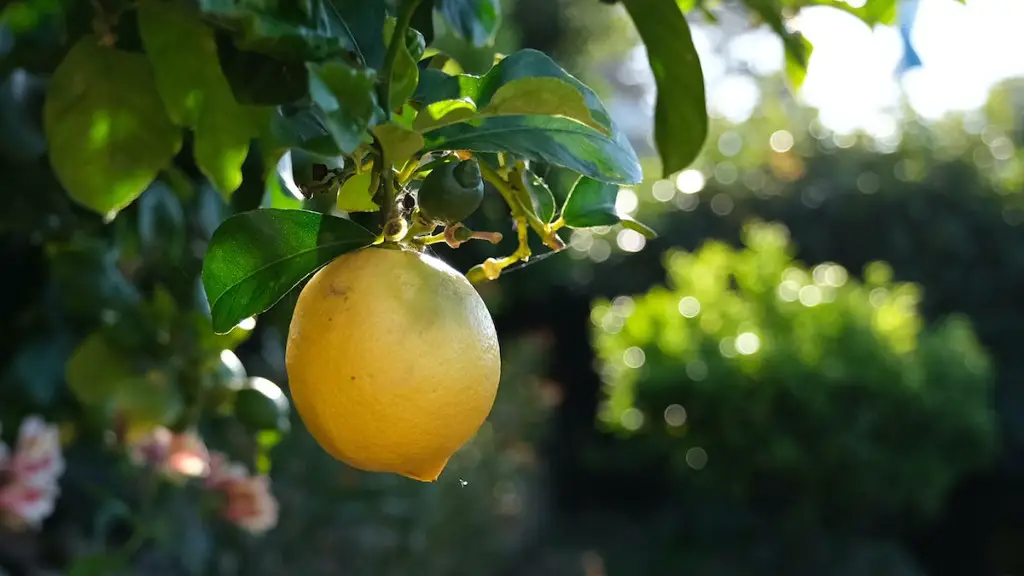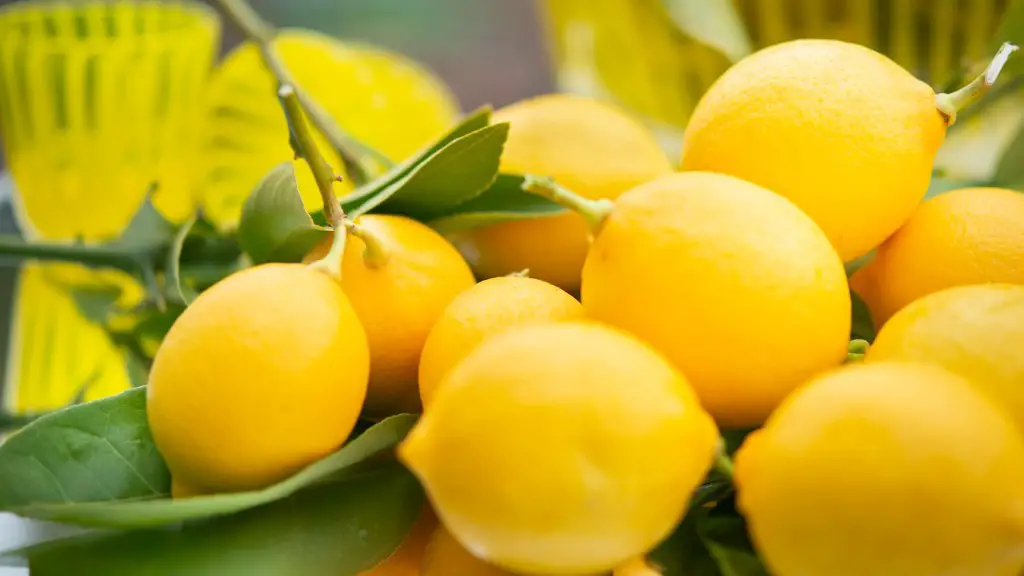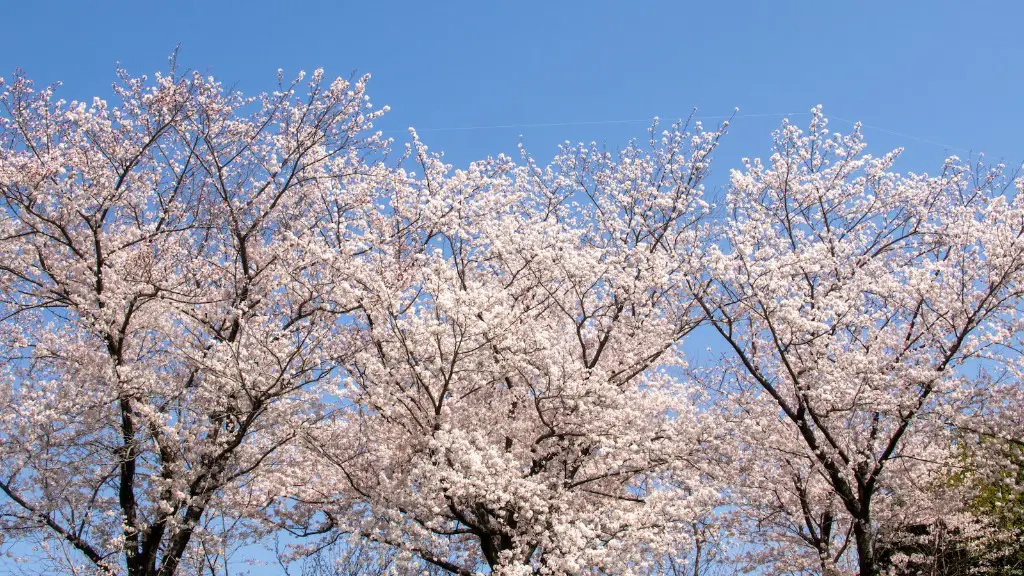Pruning a lemon tree in a pot is an essential aspect of plant maintenance. It can help the tree to grow strong and produce more fruit. Pruning should be done at regular intervals, as over-pruning can stunt new growth and damage the tree. Knowing when to prune a lemon tree in the pot properly is the key to establishing good fruiting habits.
The best time to prune a lemon tree in a pot is after it has finished fruiting. During the winter, the tree should have a good dormant period as this is the period when it will heal from any pruning. Pruning a lemon tree at the end of the season ensures that new growth is maximized and should ideally be done before the tree resumes its growth cycle.
When pruning a tree, it is important to remember that the tree shouldn’t be pruned too much. An optimal pruning schedule should be worked out depending on the size of the tree and the health of the tree. Generally, it is best to keep the pruning moderate, as too much or too little can impair the tree’s growth.
When pruning a tree, it is also important to be aware of the shape of the tree. For a lemon tree, pruning should be done in order to encourage it to generate more fruit. Pruning should be focused on areas that are low in fruit production, while leaving the fruits and stems that are producing healthy lemons.
It is important to also consider the season when pruning a lemon tree. Pruning during the autumn and winter when the tree is in its dormant period is beneficial as this gives the tree enough time to recover, while pruning right before spring can cause too much shock to the tree.
When pruning, it is essential to use sharp, clean tools. Dull and dirty tools can cause tears in the bark and leave the tree vulnerable to diseases and pests. Pruning should also cleanly cut the branches and leaves, rather than tearing them off which can damage the structure of the tree.
Overall, properly pruning a lemon tree in a pot is an important part of its maintenance. Pruning should be done after the tree has finished fruiting, in order to maximize the potential of the new growth. It is important to remember to use sharp, clean tools and to keep the pruning moderate. Following these guidelines will ensure that the lemon tree remains healthy and produces healthy fruits.
Fruit production
Fruit production is an important result of pruning a lemon tree in a pot. Pruning the tree can help to increase the overall fruiting, as it encourages more flowers to be produced. Pruning should be focused on areas of low fruit production, while leaving healthy fruits and stems undisturbed. This allows the tree to focus its efforts on the fruit producing areas, boosting yields and promoting healthy growth.
Pruning also helps to increase the quality of the fruits produced. Pruning allows the tree to focus on generating larger fruits, as it can divert energy away from smaller fruits and flowers which aren’t viable. This can also help to promote a better cropping season, as the tree has resources and energy available to focus on blooming and fruiting.
In addition to pruning, proper fertilization can help to promote fruit production. A good fertilizer can help to encourage better yields and a larger fruit size. Watering the tree correctly can also help to promote healthy fruit production, as an under or over watered tree can be prone to decreased yields.
Overall, pruning a lemon tree can be beneficial for fruit production. Pruning should focus on maximizing the energy of the tree, as well as providing enough water and fertilizer to promote healthy fruit yields. By following these guidelines, a lemon tree can be maintained to ensure maximum yields.
Tree structure
The correct pruning of a lemon tree can help to promote its structural development. Pruning should focus on yield areas, while also eliminating any dead wood and weak branches. Eliminating dead wood and any diseased branches can help to encourage healthy new growth and promote a tree that is better able to produce good yields.
Pruning can also help to promote better branching and a wider canopy, both of which are important for healthy yields. A wider canopy allows the tree to absorb more sunlight, which in turn increases the number of flowers it can produce. Pruning should be done in a way that encourages lateral branches, as this increases the surface area for the tree to absorb sunlight.
In addition to pruning, regular watering and fertilization can help to promote tree health and structural development. Proper watering ensures that the tree has enough moisture to encourage healthy growth, while the correct fertilizers can help to promote additional growth and stronger branches.
Overall, pruning a lemon tree can be beneficial for its structure. Proper pruning can help to promote yield areas as well as eliminate dead wood, while regular fertilization and watering can also help to encourage healthy new growth. Following these guidelines can help to ensure that a lemon tree can continue to be productive and healthy.
Pest & disease prevention
Pruning a lemon tree correctly can help to prevent pests and diseases from affecting it. It is essential to ensure that when pruning the tree, sharp, clean tools should be used. This helps to minimize the risk of pests and diseases as dull or damaged tools can cause tears in the bark, making the tree more vulnerable to pests and disease.
Pruning should also be done in order to eliminate any diseased wood or branches. Any dead wood or areas with discoloration should be removed, as these often become breeding grounds for pests and diseases. Proper pruning ensures that any affected materials are removed and disposed of carefully, leaving the tree healthy and strong.
In addition to pruning, pest and disease prevention requires frequent monitoring of the tree. Regularly examining the tree and its surroundings can help to identify potential issues before they become serious problems. Issues should be acted on immediately, as early treatment of pests and diseases is essential for preventing any long-term damage.
Overall, pruning a lemon tree can be beneficial for pest and disease prevention. Using sharp and clean tools, pruning diseasedwood and branches, and regularly inspecting the tree can help minimize potential pest and disease problems. Following these guidelines can help ensure that a lemon tree remains healthy and produces good yields.
Tree health
Tree health is an essential consideration when pruning a lemon tree in a pot. Pruning should be done carefully, in order to minimize the risk of damage to the tree’s structure. Pruning too aggressively can lead to shock, and can reduce the tree’s chances of producing healthy fruit.
When pruning, it is also important to be aware of the season. Pruning during the tree’s dormancy period is usually beneficial, as it allows the tree to recover without any interference of its growth cycle. Pruning at the wrong time of the year can cause too much shock to the tree, reducing the quality of the fruit and impeding its growth.
Fertilization can also help promote tree health. Proper fertilization ensures that the tree has enough minerals and nutrients to encourage healthy growth and better fruit production. It is important however to also consider the size and health of the tree when choosing a fertilizer, as overly concentrated fertilizer can be damaging to the tree.
In addition to pruning and fertilization, watering is essential for tree health. Regular watering ensures that the tree has enough moisture to produce healthy yields, while under or over watering can lead to stunted growth or poor fruit production. Maintaining water levels is essential for achieving a healthy tree.
Overall, maintaining a healthy tree is essential when pruning a lemon tree. Pruning correctly and considering the season can help to protect the tree’s structure, while fertilizing and watering can help to promote healthy growth and fruit production. Following the right guidelines can help ensure that a lemon tree will remain healthy and produce good yields.




